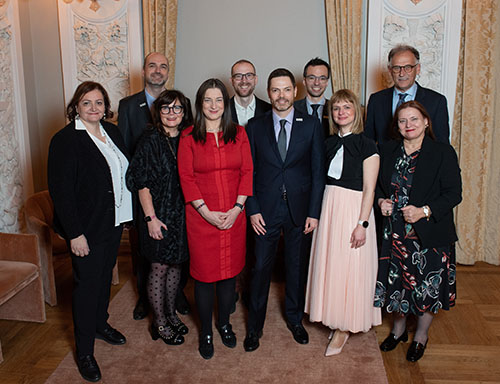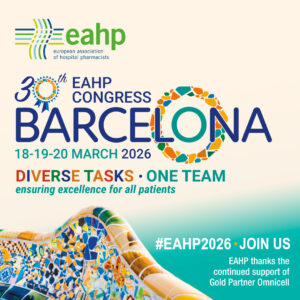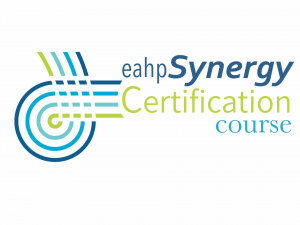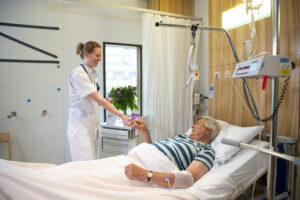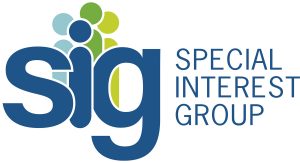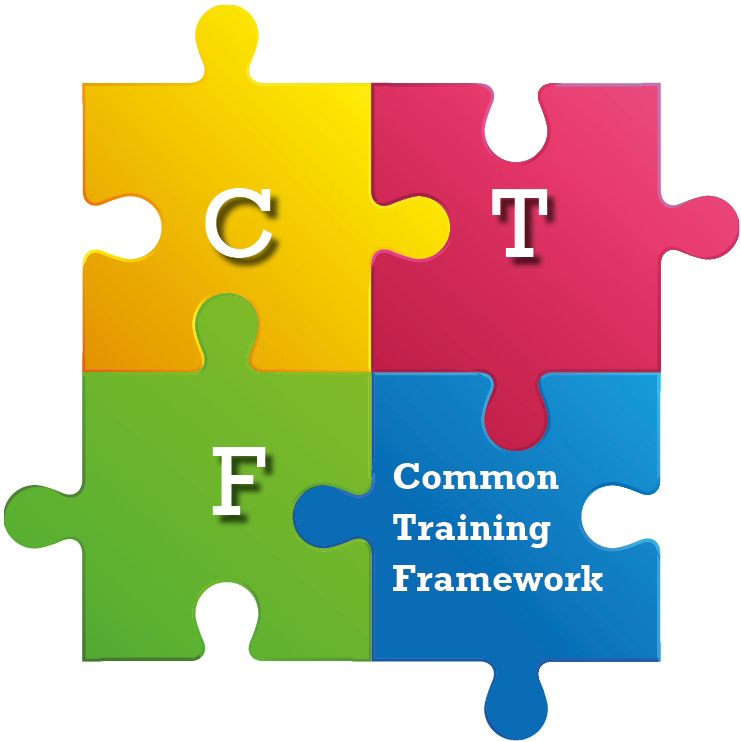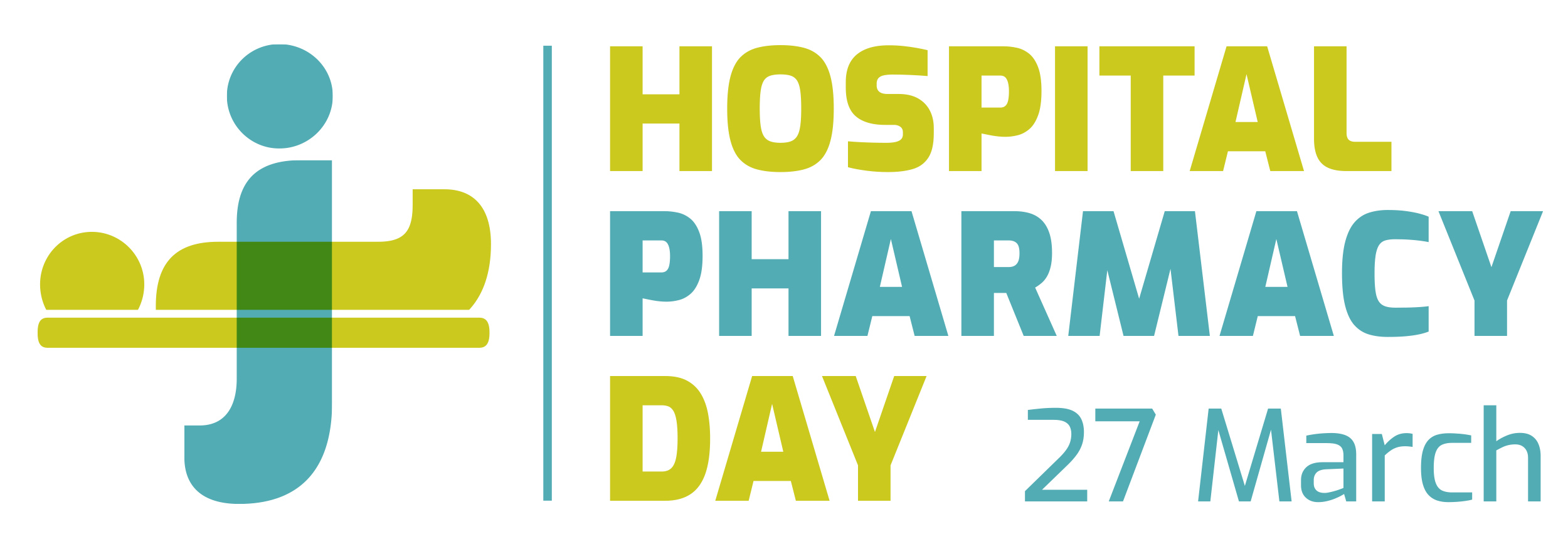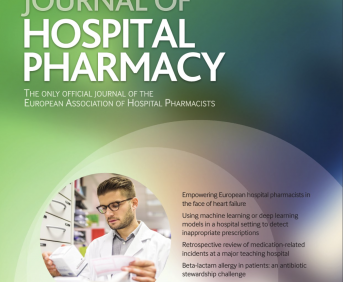MANAGING THE RISK OF MEDICATION ERRORS: A MULTI-DISCIPLINARY CONTINUING PROFESSIONAL DEVELOPMENT PROGRAMME
Pdf

European Statement
Education and Research
Author(s)
Elodie Delavoipière, Marianne Pavard, Anne-Laure Richard, Julien Montreuil, Albane Cherel, Céline Bouglé
Why was it done?
Every year in our country, 10,000 preventable deaths and more than 130,000 preventable hospitalizations are related to drug misuse. This issue is a priority of the national health strategy. Therefore, we developed a CPD training program on the issues and methods of managing the risk of ME.
What was done?
A regional multi-disciplinary Continuing Professional Development (CPD) program was developed, dealing with the risk management of medication errors (ME).
How was it done?
This program was submitted to the National CPD Agency and accepted as a continuing education measure, corresponding to the national orientation: “control of risks associated with healthcare acts and pathways”. The program and the training materials were developed by a 13-member regional working group, including hospital pharmacists and quality managers, the drug observatory and the regional health quality network.
What has been achieved?
The training is intended for any health professional involved in the medication circuit in a health or medico-social institution: physicians, pharmacists, residents, nurses, pharmacy technicians… The first part is an e-learning slide presentation with voice commentary, on the theoretical aspects of ME and on the principles of a priori and a posteriori risk management. Concrete examples of ME are integrated throughout the slide presentation. This e-learning is divided into 4 parts and is accessible for 1 month. It must be validated by the learner before participating in the second part of the training: a face-to-face simulation session with 15 learners and 2 hospital trainers (pharmacist and health quality professional). During half a day, the learners apply a posteriori risk management by analysing a fictional adverse event (ME). The case addresses several themes: never events, drug reconciliation, city-hospital link, lack of communication, human factors. Questionnaires completed before, during and after the training allow for the evaluation of learners’ satisfaction as well as the impact of the training on their knowledge and skills.
What next?
This regional training will promote the link between actors from different institutions and the multi-disciplinary approach around the management of the risks of ME. In addition, we provide an awareness kit on ME reporting, including a customizable slide show and a quiz, which allows short sessions to be conducted in any health facility.
The introduction of an emergency intravenous antibiotic reconstitution service during the COVID-19 pandemic.
European Statement
Patient Safety and Quality Assurance
Author(s)
Joanne Rhodes, Chris Bidad
Why was it done?
There was concern that there was a risk of reconstitution errors, missed doses or variation in dosing intervals which could impact on treatment efficacy and patient safety due to:
• a sudden increase in demand for IV antibiotics,
• depleted numbers of front-line nursing staff, and
• nurses being deployed to unfamiliar clinical environments and encumbered by PPE.
The emergency IV antibiotic reconstitution service was designed to mitigate these risks.
What was done?
In the absence of aseptic dispensing facilities an emergency intravenous (IV) antibiotic reconstitution service was set up in a laminar flow operating theatre. Nurses who could not work in a patient-facing role during the pandemic prepared ready-to-use infusions under the direct supervision of a pharmacist.
How was it done?
It was determined that a manufacturer’s licence was not required under part one, section three of the Human Medicines Regulations 2012 providing strict criteria were adhered to. Stability data was collated for the most frequently used IV antibiotics. Even where stability data supported a longer period, a maximum expiry of 24 hours after preparation was assigned. Processes were designed to adhere as closely as possible to the GMP principles described within The Rules and Guidance for Pharmaceutical Manufacturers and Distributors 2017. Specially tailored IV reconstitution training was delivered to the nurses.
What has been achieved?
Over a period of 4 weeks at the peak of the pandemic 1000 doses of IV antibiotics were prepared and supplied, enabling ward-based nurses to focus directly on patients. There were no reports of any incidents of delayed or missed doses, or administration errors relating to IV antibiotics supplied to the wards involved during this period. The time saved on the wards was equivalent to having 3 additional nurses on the wards each day.
What next?
With a reduction in the number of COVID-19 positive patients now presenting to the hospital the service has been paused but placed on standby so that it can be resumed in the event of a second wave. Work is underway to determine if there would be value in the team preparing a wider range of products, particularly those which may be of particular use in critical care areas such as sedatives and inotropes.
DYSPHARMA: AN ITALIAN WEB-APPLICATION FOR DRUG THERAPY MANAGEMENT IN DYSPHAGIC PATIENTS (submitted in 2019)
Pdf

European Statement
Patient Safety and Quality Assurance
Author(s)
Serena Logrippo, Giulia Bonacucina, Matteo Sestili, Alessandro Caraffa, Marco Cespi, Roberta Ganzetti
Why was it done?
Dysphagia is a well-known community issue that affects primarily aged people [1]. The availability of appropriate dosage forms for dysphagic patients is essential to guarantee therapy adherence. Extemporaneous compounding of SODSs (e.g. crushing tablet or opening capsules and dispersing the obtained powder in an appropriate base or vehicle) is a common practice due to the unavailability of different dosage forms to satisfy the current needs of patient. However, compounding practice is neither risk-free nor error-free [2]. The aim of the work was to realise a web application to support HCPs in drug therapy management of dysphagic patients.
What was done?
To properly manage oral therapy in dysphagic patients, a multidisciplinary team developed an algorithm and applied it to over 8000 medicinal products available as solid oral dosage forms (SODSs). A web-based, decision-making tool was launched to support healthcare providers (HCPs) during the prescription, compounding and administration of SODFs to dysphagic patients.
How was it done?
An extensive review of the Italian pharmaceutical market database, product characteristic summaries and scientific literature were used for data collection. For each prescription drug formulated as SODF, an information sheet was elaborated and continuously updated.
What has been achieved?
DysPharma (www.dyspharma.it) is an on-line support currently available and under restyling. By registering and logging-in, it is possible to access technical content that comprises medicinal product details, drug-food interactions, extemporaneous compounding methods, and risk symbols. Medicinal products can be searched by active ingredient name, medicinal product name, and marketing authorisation.
Customised symbols are reported for: do not crush tablets or open capsules, do not split tablets, to wear personal protection devices in case of manipulation of hazardous drugs, and drug associated with dry mouth.
What next?
This decision support tool may be integrated with computerised medical records to reduce medication-prescribing and administering errors and to improve clinical outcomes of dysphagic patients.
References:
[1] Clavé, Pere, and Reza Shaker. “Dysphagia: current reality and scope of the problem.” Nature Reviews Gastroenterology & Hepatology 12.5 (2015): 259. [2] Logrippo, Serena, et al. “Oral drug therapy in elderly with dysphagia: between a rock and a hard place!” Clinical interventions in aging 12 (2017): 241.
IDENTIFICATION OF HAZARDOUS DRUGS IN EMERGENCY DEPARTMENT: DRUGS CABINET INSPECTION (submitted in 2019)
Pdf

European Statement
Patient Safety and Quality Assurance
Author(s)
Mª Antonia Meroño-Saura, María López-Morte, Taida Rodríguez-Martínez, Pilar Pacheco-López, Consuelo García-Motos
Why was it done?
The publication of the NIOSH list and its application by INSHT in Spain has changed the concept of “Hazardous drug” in terms of its handling and administration, as well as personnel training involved in its management.
What was done?
The main objective is to label every drug considered “Hazardous” and to review the medication included in the Emergency Department kit in a tertiary hospital.
How was it done?
Literature about Hazardous drugs was reviewed. All the drugs included in the Emergency Department kit belonging were identified and classified according to their level published in the NIOSH list. A kit’s review was carried out on site, as well as a Hazardous drugs’ categorisation by adequate labels.
What has been achieved?
6 out of 239 drugs included in the emergency kit were labelled as Hazardous drugs, and could be found in 9 different presentations. Regarding its risk level according to the NIOSH list; chloramphenicol, risperidone and all different presentations of phenytoin were classified as level 2. Acenocoumarol, colchicine/dicycloverine and all different presentations of valproic acid were classified as level 3.
The following incidents were detected;
– Lack of identification: 8 out of the total number of drugs presented identification errors.
– Location error: 4 out of the total number of drugs were not well located.
– Photosensitive: 56 out of the total drugs were photosensitive, of which 11 were not correctly identified or stored.
– Expired drugs: 12 drugs, whose total stock was 399 units. 51 out of the total amount were expired.
After this review, the following measures were carried out:
– Orange labelling for Hazardous drugs’ identification, regardless of their risk level.
– Misidentified drugs were re-labelled, and those that were misplaced were placed in their assigned spot.
– Photosensitive drugs were correctly identified by blue labels and properly preserved.
– Expired drugs were withdrawn.
What next?
Simplifying Hazardous drugs’ identification by a categorisation following a colour code could lead to a safer manipulation by the professionals. During the review of the kit, several incidents were detected and sorted out, which avoided possible medication-related errors. Therefore, it is necessary to establish several control measures in emergency kits in order to avoid errors and improve the safety in the use of drugs.
REVIEW OF THE HOSPITAL HIGH-ALERT MEDICATIONS LIST USING HOSPITAL AND INTERNATIONAL DATA (submitted in 2019)
Pdf

European Statement
Patient Safety and Quality Assurance
Why was it done?
In University Medical Centre Ljubljana (UMCL) a HAM list was created in 2008 and has not been significantly changed since then. Our aim was to develop a systematic strategy to review the list by including local data.
What was done?
We comprehensively updated the hospital list of high-alert medications (HAM) and identified hospital specific medications not yet present on HAM lists. We joined international HAM data supported by medication error (ME) reports and expert opinion with data from the hospital ME reporting system.
How was it done?
We analysed 390 MEs submitted to the UMCL ME reporting system from 2016 to 2018. We compared the HAM list from Institute for Safe Medication Practices (ISMP) and the UMCL HAM list. The criteria such as frequency of the reported ME, severity of harm for the patient, affected population, novelty, etc, were used to identify potential HAM. Furthermore, we calculated the probability of the ME report for the individual medications from the reported MEs and the hospital medication consumption data. The calculation was done for the medications involved in 3 or more reported MEs (Tyynismaa et al, 2017) and for the medications involved in MEs which caused harm to the patient.
What has been achieved?
The joined results from the comparison of HAM lists and reported MEs showed that several other medications could be added to the UMCL HAM list, e.g. individualised parenteral nutrition for the paediatric population, oral sedation agents for children, dialysis solutions, lidocaine IV, methadone, bupivacaine, and nusinersen. The probability-based HAM identifying method supported our previous suggestions to extend the UMCL HAM list. Additionally, the method unexpectedly revealed medications with a high probability of ME and/or harm for the patients, that are not included in any HAM list (ISMP, UMCL), such as romiplostim, parenteral iron preparations, ampicillin with sulbactam, and others.
What next?
In future we plan to develop a paediatric specific HAM list based on the same strategy; i.e. considering international suggestions and analysing paediatric ME reports in UMCL.
THE ACTIVITIES AND IMPACT OF A HOSPITAL-WIDE MEDICATION INITIATIVE (submitted in 2019)
European Statement
Patient Safety and Quality Assurance
Author(s)
Alice Oborne, Mark Kinirons, Virginia Aguado, Steve Wanklyn, Laura Watson, Jaymi Mistry, Duncan McRobbie, Abhiti Gulati, Emma Ritchie, David Wood, Niall Stewart-Kelcher, Adrian Hopper, Patricia Snell, Tony West
Why was it done?
Medicines are common interventions but have inherent dangers: 9% inpatient prescriptions contain errors, and medication errors occur at an estimated rate of one per patient per day [1-3]. Medication incident reporting was low, with high proportions of harmful incidents.
What was done?
Senior and junior staff collaborated to systematically improve safe medication processes and outcomes in a 1200-bedded multi-site hospital. The work aimed to reduce harm from medicines and improve medication safety culture.
How was it done?
Pharmacists, doctors, nurses and governance staff set up a Medication Safety Forum which met monthly to focus on high risk drugs, processes and patients. Published literature and international guidance were reviewed [1-3]. Twelve subgroups worked on safer opioid, insulin, anticoagulant, allergy and injectable medicine use and paediatric, elderly, critical care and peri-operative care. Subgroups published guidelines on the hospital intranet. External aviation and patient safety experts reviewed processes. Medication incident data were reported to staff monthly from June 2008. A monthly medication safety newsletter (total 68), screensaver messages, podcasts, mouse-mats, ‘safety days’, audit, training and senior staff promoted best practice. Electronic prescribing and medication administration (EPMA) with decision support was introduced in 2015.
What has been achieved?
The Medication Safety Forum met monthly 2009−2019. Medication incident reporting increased from 60 to over 400 per month (total 31330 over 11 years), whilst harmful incidents all reduced (Figure). Incidents with harm reduced from 51 to 24 in the first to last 20 months. Dose omissions reduced by 10% despite an increase in patient acuity, anticoagulant use and insulin use. The most common incident type was wrong dose, agreeing with national incident data. New guidelines included 30 for insulin, 28 anticoagulation and 19 opioid use. Medication incident reporting increased from 10th to highest in similar hospitals [3].
What next?
Multidisciplinary leadership, multimedia guidance, technology, audit and feedback in medication safety can be applied in any healthcare setting to enhance patient safety. Further system enhancements are planned.
References:
[1]National Patient Safety Agency 2004. Seven steps to patient safety
[2]Prescribing report, 2010. www.rcpLondon.ac.uk
[3]NHS Improvement organisational data reports
BUILDING THE FOUNDATIONS OF A MEDICATION SAFETY PROGRAMME IN AN ACUTE HOSPITAL (submitted in 2019)
Pdf

European Statement
Patient Safety and Quality Assurance
Author(s)
Bernie Love, Tracy McFadden, Patrick Martin, Val Connolly, Deirdre Brennan, Michelle Griffin, Danielle Bracken, Siobhan Maguire, James Carr
Why was it done?
Avoidable harm caused by medication is one of the most commonly reported adverse events in healthcare settings.
What was done?
Connolly Hospital Blanchardstown launched a formal Medication Safety Programme in November 2017 by appointing a Medication Safety Facilitator and establishing a multidisciplinary Medication Safety Committee to promote and support the safe use of medications. The Medication Safety Committee undertook a number of activities to establish the programme in the hospital.
How was it done?
-An evidence-based literature review to define and guide the scope, breadth and direction of the programme. -A baseline in-depth analysis of locally reported medication incidents (2016/2017) on the National Incident Management System (NIMS) was conducted to identify initial targets for improvement. Analysis was undertaken using NCC-MERP, a recognised and validated tool used specifically for medication incidents. -An annual work-plan, incorporating necessary elements of a medication safety programme, was devised by the committee defining goals for the year.
What has been achieved?
Safety Culture: • Prominent commitment from hospital management to medication safety. • Investigations into medication errors aligned to a just and fair systems approach. • Promotion and encouragement of medication safety reporting and learning with a Medication Safety Awareness Day. • Implementation of the ‘Know, Check, Ask’ campaign to enhance medication safety by empowering patients. Governance: • Organogram updated to reflect reporting relationship of new committee. • Medication Safety made standing item at Quality & Safety Executive meetings. • Annual report submitted to Hospital Executive Committee Measurement & Monitoring of medication incidents: • Quarterly report produced and disseminated to front-line staff tracking and trending medication incidents including narratives. • Performance indicators established for: -No. of incidents reported (2018 reporting increased by 32% over 2017); -Reporter of incidents; -Category of harm; -Stage of medication use process where incidents have occurred. Education & Training: • Regular face-to-face education sessions arranged with front-line staff. • Quarterly medication safety bulletin devised and disseminated, informed by audit findings and incident reports. • The successful Medication Safety Minute initiative from St James’s Hospital was adopted and implemented, with content informed by local incidents. Development, Updating and Dissemination of PPPGs. • New IV drug administration guides (n=53) developed and updated. • Introduction of one-page ‘Medicines Information Sheet’ as quick reference guides for key topics. • DOAC prescription and administration guide developed and circulated. Audit: • Audit programme established informed by incident analysis, complaints and best-practice including introduction of an ‘audit window’ to gather hospital-wide data. Quality Improvement: • Informed by incident analysis, best-practice and audit findings, a number of moderate-high leverage quality improvement projects were initiated including removal of concentrated potassium from general clinical areas, introduction of an insulin & glucose monitoring record and introduction of an automated dispensing cabinet for out-of-hours access to medication.
What next?
The structural aspects established for the Medication Safety Programme have been successful in establishing a programme in the hospital and are reproducible by other centres.
Work continues in Connolly Hospital to identify themes of incidents, audit of practice and implementation of quality improvement initiatives.
AN AUDIT OF DISCHARGE PRESCRIPTIONS FOR SURGICAL AND MEDICAL PATIENTS WITH A QUALITY IMPROVEMENT INITIATIVE (submitted in 2019)
Pdf

European Statement
Patient Safety and Quality Assurance
Author(s)
Eva Heffernan, Deirdre Smith , Avril Tierney, Louise McDonnell
Why was it done?
Transitions of care such as hospital discharge present an opportunity for medication error. Lapses in communication at this interface are common. For the next healthcare provider (HCP) to issue the correct medication safely and in a timely manner, the discharge prescription needs to bridge this communication gap. Prescribing errors are the most frequent subtype of medication errors and can be repeated systematically for prolonged periods. Detection of medication error using tools such as audit, learning from these errors and planning corrective action is essential to building safer healthcare systems.
This study adapted the Health Information and Quality Authority (HIQA) national standard for patient discharge summaries to create a benchmark for discharge prescriptions in SVPH. A QI initiative targeting prescribers was developed. This was designed as a bundle intervention and was called the Discharge Prescription Education Bundle (DPEB).
What was done?
The aim of this project was to evaluate the current level of discrepancies on discharge prescriptions for surgical and medical patients and to ascertain if a quality improvement (QI) initiative can impact on the severity of medication error at the point of discharge.
How was it done?
Uncontrolled consecutive baseline and re-audit of discharge prescriptions on a 26-bed mixed medical and surgical ward. The baseline audit assessed 70 patients’ discharge prescriptions. Deviations from the standard were termed discrepancies. Discrepancies were divided based on capacity to cause error (NCC-MERP Category A) and error occurred (NCC-MERP Category B-I). Discrepancies where an error occurred (NCC-MERP Category B-I) were reported using the in-house medication incident reporting (MIR) system and dually assessed by an independent panel and the project lead for potential to cause harm. The QI initiative was implemented and its impact assessed with a re-audit of 70 patients’ discharge prescriptions.
What has been achieved?
The overall number of discrepancies reduced from 156 in the baseline to 59 in the re-audit (p<0.05). Overall compliance with the audit standards improved from 17.1% to 54.3% (p <0.05). In the baseline audit 22.8% (n=16) of patients had a discrepancy where an error occurred; this reduced to 2.65% (n=2) in the re-audit (p<0.05). The severity of errors reduced in the re-audit.
What next?
The QI initiative used was proactive not reactive. Use of the discharge education bundle was not restricted to pharmacy opening hours.
This initiative was very low cost to implement. Following on from the successful results of this project one component of DPEB called the discharge prescription visual prompt is now preprinted on all SVPH discharge prescriptions as a reminder to prescribers.
STANDARDISATION OF DILUTED POTASSIUM INTRAVENOUS SOLUTIONS IN NEONATAL CARE UNITS (submitted in 2019)
Pdf

European Statement
Patient Safety and Quality Assurance
Author(s)
Luis Pérez de Amezaga Tomás, María Magdalena Parera Pascual, Mónica Sanz Muñoz, Catalina March Frontera, Gonzalo González Morcillo, Alejandra Mandilego Garcia, Álvaro Medina Guerrero, Ana Filgueira Posse, Montserrat Vilanova Boltó
Why was it done?
Administration of intravenous KCl produces hyperkalaemia and this can result in cardiac arrest and death. The Institute for Safe Medication Practices (ISMP) as well as other security agencies have recommended the withdrawal of KCl 2M from ward stock. This project was born as a response to these recommendations. We focused on a group of patients where these practices have not been extensively implemented. The aim of the protocol was to standardise the prescription, preparation, dispensation and administration of KCl to neonates in our hospital.
What was done?
Development of a protocol that standardises diluted potassium intravenous solutions for neonates (including those preterm over 28 weeks of gestation). This allowed us to remove concentrated potassium chloride (KCl) 2M from neonatal care units in our hospital. For this purpose, the hospital pharmacy centralised the preparation and distribution of KCl ready-to-use infusions.
How was it done?
The elaboration of the protocol took place as follows: • A multidisciplinary team designed KCl ready-to-use solutions that met the requirements of the newborn: – Glucose 10% 250mL with 5 mEq KCl (20mEq/L solution) – Glucose 10% 250mL with 10 mEq KCl (40mEq/L solution). • The hospital pharmacy centralised the preparation of these solutions. A risk assessment was performed and determined an expiration date of 7 days. • These solutions were stocked at all neonatal care units: Intensive Care Unit, Hospitalized Paediatric Unit and Paediatric Emergency Unit. • Weekly, the hospital pharmacy distributes these solutions and disposes of the expired ones. • Only ready-to-use KCl solutions were able to prescribe at the electronic prescription programme. • A formation plan was implemented to train all the professionals involved in neonatal care.
What has been achieved?
The protocol was implemented in November 2016. Since then, 65 patients have been treated with 20mEq/L solution and only 1 patient with 40mEq/L solution. No remarkable imbalances in electrolytes have been detected resulting from the standardisation of the fluid therapy with KCl. Only 3 incidents have been registered. All of them were prescription errors (solution selection); they reached the patient but without damage.
What next?
Nowadays, we are developing a stability study of the KCl solutions in order to assess the appropriateness of the expiration date.
IMPACT OF A MEDICATION REQUEST TOOL FROM THE NURSING ADMINISTRATION VIEW IN HOSPITALISATION (submitted in 2019)
Pdf

European Statement
Patient Safety and Quality Assurance
Author(s)
M. T. Barrera, O. Carrascosa, P. Madrid, A. Aguado, R. Martínez , N. Argüello, E. Cuellar, M. Vela, C. Jimenez, S. Payan, O. Sánchez
Why was it done?
Lack of stock delays medication administration by nurses. This situation also generates hospital warden displacements to Pharmacy Service and telephone interruptions of Pharmacy technicians’ work. The main aim was to amend stock lack management to improve patient security during medication preparation and administration. The secondary objectives were: reduce interruptions of other health professionals and automate warehouse exits, avoiding errors of manual updating of Pharmacy stock.
What was done?
This tool is part of “Safe Medication Administration in Hospitalization/Avoid Interruptions” project. A “button” was included in the nursing administration view of the electronic prescription programme, which when activated automatically generates a request to the Pharmacy Service for a dose of required medication. Hospital Information Systems were contacted for the design. All requests generated during the administration of medication were automatically received in Pharmacy Service. They were grouped by plant, listed, deducted from stock and dispensed at the agreed times.
How was it done?
The tool was developed by Hospital Information Systems, in collaboration with nursing, and staff training was carried out for correct handling of the tool. Also, medication dispensing schedules were agreed with the hospital warden. 15 days before tool implementation, the Pharmacy Service analysed all medication requests made from hospitalisation. Data collected were: plant and shift requested, reason, existence of pattern, requested medication, requested units, notice to auxiliaries to collect medication. After the first week of implementation, the same assessment of requests was made during the same period to compare and evaluate the impact of this tool implementation.
What has been achieved?
When both periods were compared, prescribed medication requests decreased from 198 to 15, this difference being statistically significant (Fisher’s exact test p=0.008). This difference meant significant reduction of interruptions in Pharmacy technicians’ daily work. Requests reasons were lack of dose in 43.4% (n=95) of cases, immediate prescriptions in 29.2% (n=64) of cases and treatment change in 20.5% (n=45) of cases. 29.2% of all requested medications belonged to the antimicrobial and antiviral group. 62% (n=135) of the total requests were received in the morning shift. Hospital warden displacements were significantly reduced when comparing both periods from 102 to 3 (Chi square test, p=0.006). This meant a significant reduction in interruptions in hospital warden work. It has been possible to standardise and improve efficiently nursing management of medication stock lack.
What next?
The incidents technical improvement is pending, as well as training of new nursing staff. It is possible to implement this tool in all hospital units that have electronic prescription.
